A Canadian win over the United States in Concacaf Nations League on Tuesday at BMO Field would be significant in two ways.
Firstly, it would be Canada’s first victory against the U.S. in any competition since 1985. Second, it would boost the national team’s ranking in Concacaf as they attempt to qualify for the hexagonal phase of World Cup qualifying.
Even though the U.S. is undergoing a transitional phase under coach Gregg Berhalter, there is still obvious quality in the team, and defeating them will be a tough task.
Here’s how Canada can nullify the U.S. and emerge victorious.
How the U.S. could line up
With so much recent experimentation, it’s difficult to identify a clear starting 11. However, based on the selection against Cuba on Friday, the latest injury news and previous lineups, this could be the U.S. team to face Canada.
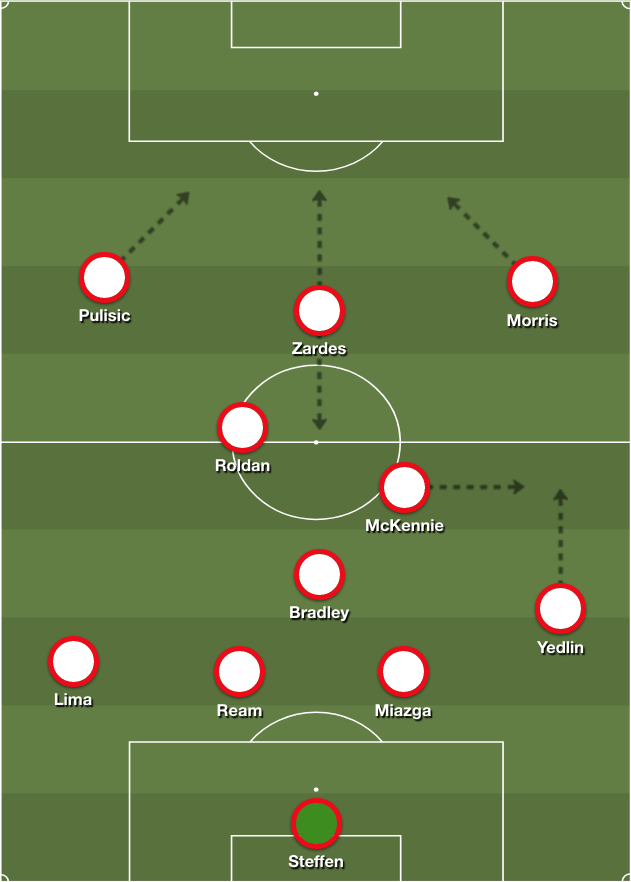
How the U.S. likes to play
The U.S. has averaged approximately 54 per cent possession in 15 games under Berhalter, which is understandable. Building from the back is also a major component of Berhalter’s system.
Nowadays, loads of teams build out of defence with three players at the back. The holding midfielder will drop into the back line and create a numerical advantage, which is what Wil Trapp (centre) does in the image below.
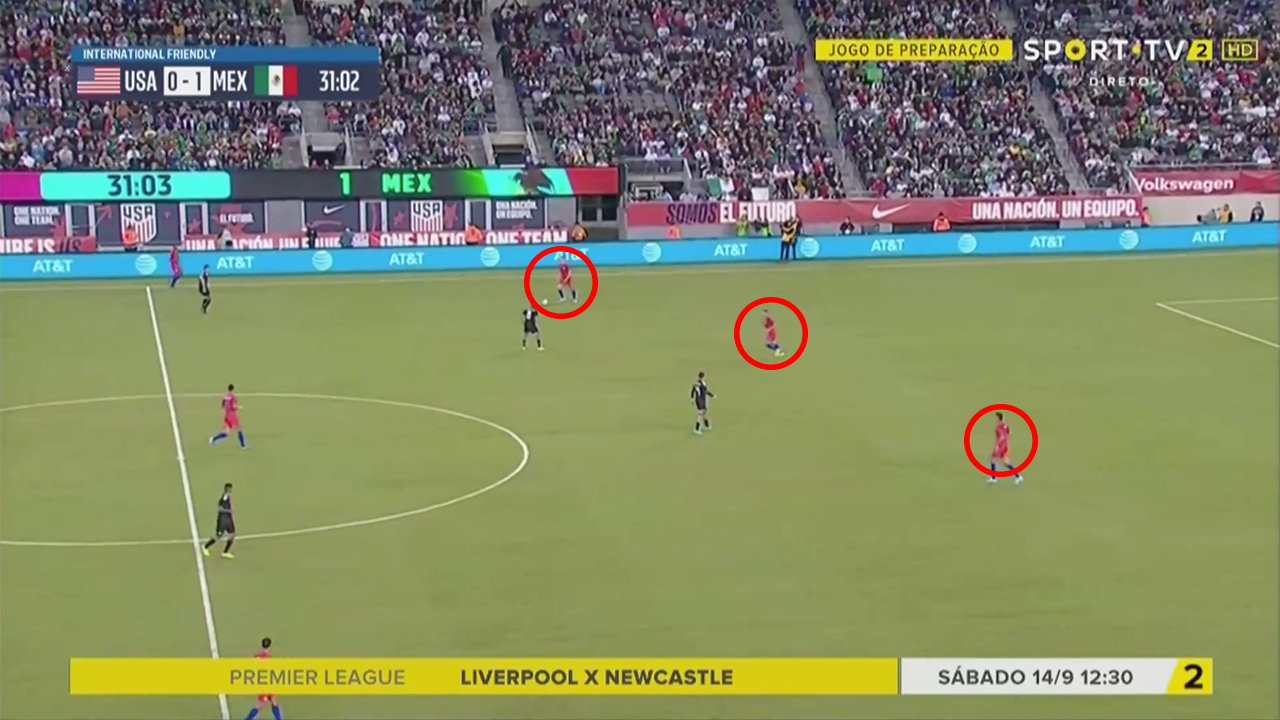
Out wide, the U.S. has two right-backs in DeAndre Yedlin and Reggie Cannon who love to bomb forward, no matter the situation.
Even in the Gold Cup final against Mexico, who comfortably won the possession battle, Cannon was pushed up the pitch. His heat map demonstrates this as the majority of his touches are in the final third (bottom right side of the graphic).
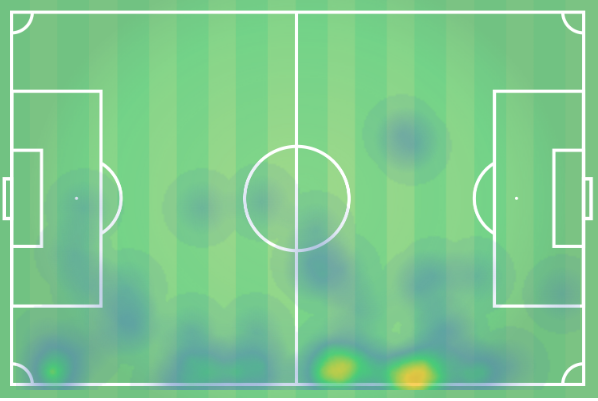
To help protect that flank, the right-sided central midfielder will protect the right back.
The below graphic shows the average positioning of the U.S. against Uruguay in September when the Americans had possession. Roldan (No. 7) was tasked with the responsibility of right-back protection.
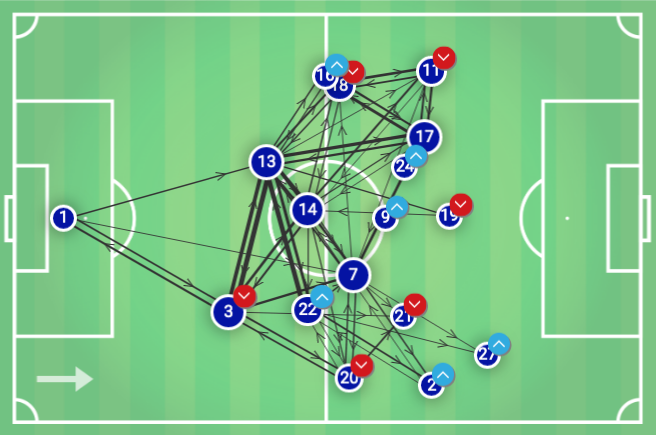
Off the ball, the U.S. will try to press high but if the opponent breaks through that pressure, the Americans will retreat into a compact defensive shape.

How Canada could line up
Canada’s starting 11 is just as difficult to predict. The United States’ possession-heavy system and their high press means that Herdman has to ensure Canada isn’t outmatched numerically.
Herdman said that training has focused on a couple of principles, including coping with the American high press, so that could dictate the team selection.

Jonathan David is in terrific form, but Lucas Cavallini has been a reliable starter for Herdman when the striker is available. David could line up on the right in place of Junior Hoilett, or perhaps Alphonso Davies is relegated to the bench given his lack of match fitness.
“I think if you put your best attackers on the field, and you can see that at the Gold Cup, you can score goals but you are going to be vulnerable,” Herdman said. “[The U.S.] are another level up from anything we have played outside of Mexico, so we have to respect that. If you don’t match that [athleticism], if you have got too many players up field – that are those power players that can sprint and they need a 20-second recovery, sprint again – if you have got too many of those players, you won’t cope with the U.S.’ intensity.”
Putting Mark-Anthony Kaye with Scott Arfield in midfield gives the team plenty of ground to cover. Jonathan Osorio would suffice as well with his box-to-box presence.
However, Kaye and Arfield are, by far, the two best players on the Canadian roster when it comes to progressing the ball. They are both among the elite in their respective leagues in passes into the final third per 90 minutes (P3/90 on the radars below).
The closer to the outside edges of the radar, the better the ranking in that specific statistical category.
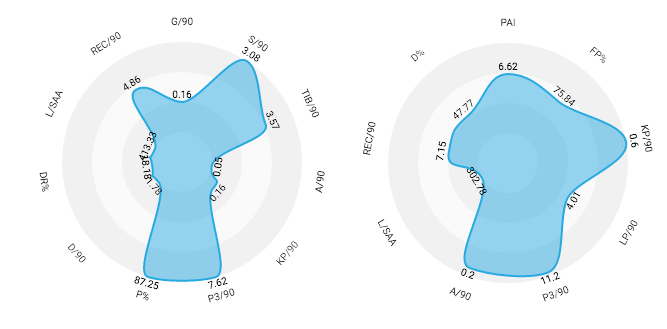
“We have to get that balance right,” Herdman said. “We are going to need more midfielders in and around the field than out-and-out strikers. There will be a time where, if the game requires, you may have to have all of those strikers out on the field.”
How Canada can stop, and exploit, the U.S.
As seen in the 6-0 win over Cuba in September, Canada defended in a 4-4-2 off the ball.

Uruguay defended somewhat similarly against the U.S. last month, although they stayed compact in a 4-5-1 with Federico Valverde at the base of the midfield. Canada can replicate this with Samuel Piette operating in the Valverde role and Cavallini staying up front.

This led to just 10 shots for the U.S. in that 1-1 draw with Uruguay. In the previous match against Mexico, who lined up in a similar defensive shape, the Mexicans only conceded six attempts and just 0.34 non-penalty expected goals.
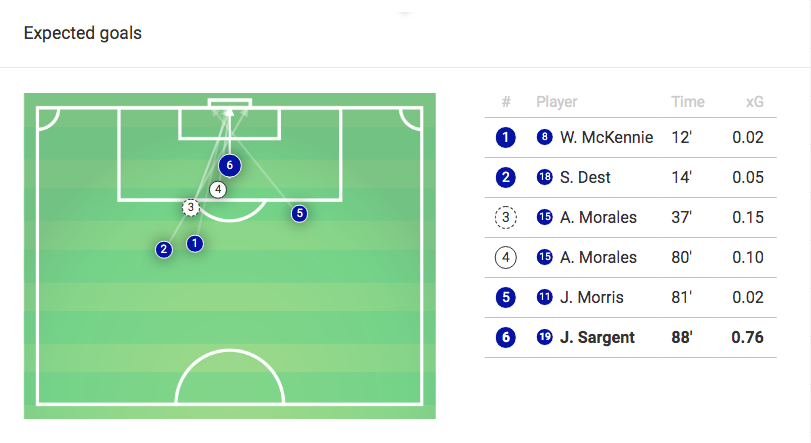
In terms of how to exploit the U.S. offensively, the key could be found on the left wing for Canada.
“Cannon has left that space open [when bombing forward] and if you go back to the Uruguay game, I think Uruguay had some great opportunities in transition,” said Herdman. “The U.S. have conceded the majority of their goals in transition and they have conceded the majority in the last 30 minutes of games. There is something about that, that we’ve been looking at, around our selection and how we are going to go about bringing in certain players at certain times.”
That would back up the inclusion of Sam Adekugbe at left back. He is technically gifted and an excellent crosser, while Davies (or whoever starts on the left wing) is clearly comfortable on the counter against stronger opposition, as seen during the Gold Cup against Mexico.
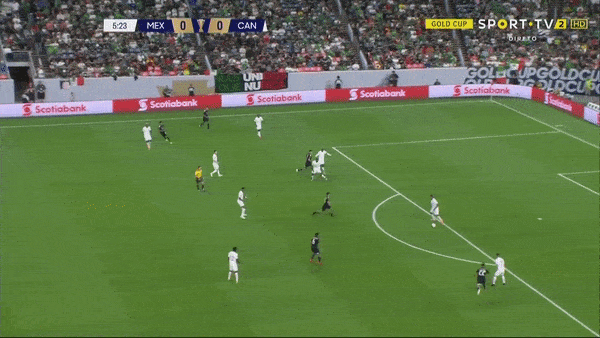
Of the 11 goals conceded by the U.S. under Berhalter, five have come in the final 30 minutes, which Herdman noted. If there is ever a time to punish the Americans on the counter, that would be it.
In the home win over Cuba, there was obvious chemistry between Hoilett, Kaye and Richie Laryea on the right wing. Even if it’s just the latter two starting, that could help Canada find attacking balance on both sides of the pitch.
“I’ve known Mark for a long time and played with him before so it’s easy to play with him,” Laryea told Sportsnet. “We obviously haven’t all been together. We are all on different club teams, so communication is going to be a big thing for us in terms of the way we defend and the way we attack as well.”
It’s easier said than done to utilize these tactics since they require incredible levels of concentration. However, this game is winnable if Canada can execute this plan.
[relatedlinks]

